STRUCTURE BEFORE SCALE
This platform protects structure, not scale
200 Brady Street is not a startup built for blitz scaling. It’s public infrastructure, designed with constraints that protect contributors, licensing logic, and public interest use, even after capital enters.
Before a single dollar was raised, the platform’s governance structure was mapped in full. Milestone scopes, licensing terms, contributor protections, and audit requirements weren’t added after, they were built in from the start.
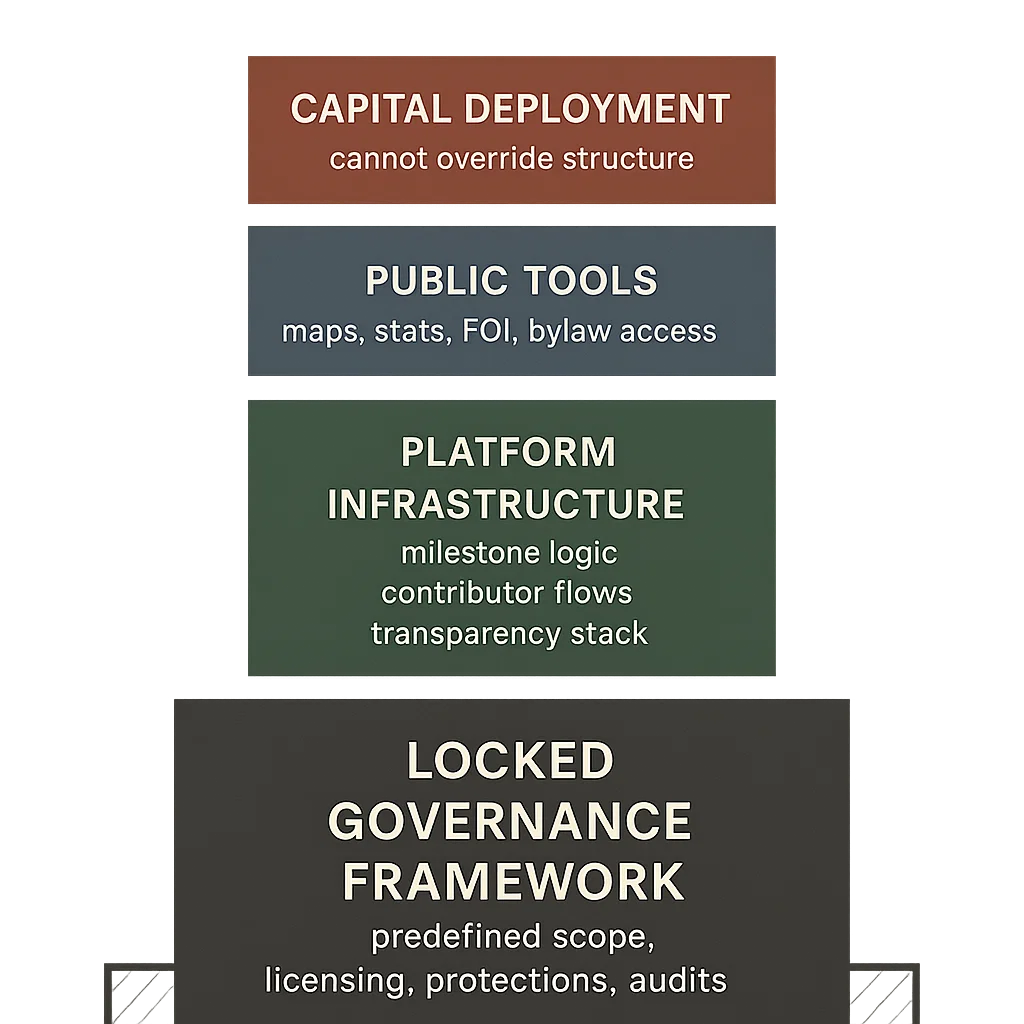
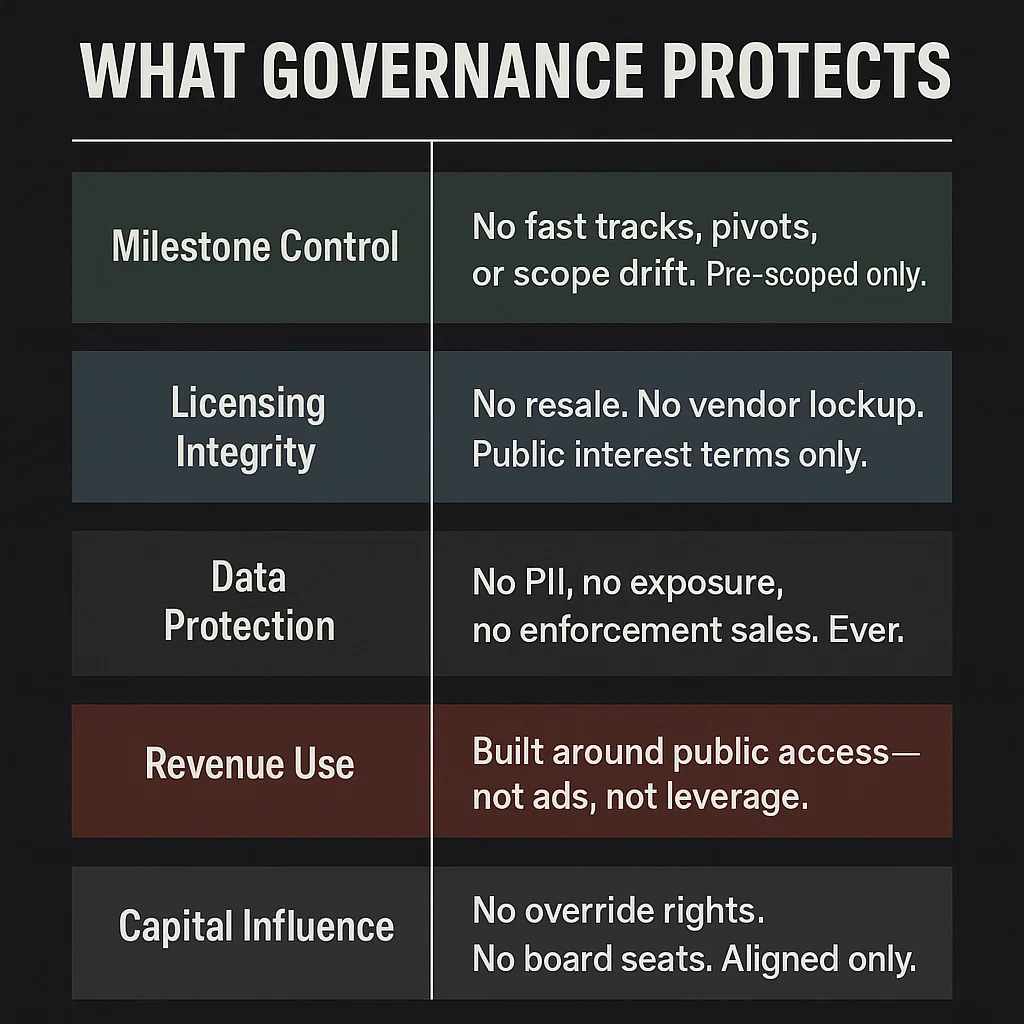
WHAT GOVERNANCE PROTECTS
Guardrails come first and they hold
| Area | Safeguard |
|---|---|
| Milestone Control | Deployment only advances through pre-approved scopes, no fast tracks, pivots, or scope drift. |
| Licensing Integrity | No resale, no lockup. Civic+ tiers are protected by public interest clauses and reciprocity. |
| Data Protection | No PII, no enforcement contracts, no exposure by design. Contributor protection is non negotiable. |
| Revenue Use | All monetization flows are scoped around public access, not private leverage or ad funnels. |
| Capital Influence | No equity override. No board seats. Aligned funding supports structure it does not direct it. |
🔎 Want definitions of terms like redaction logic, licensing safeguards, or non-override controls? See our Key Terms & Concepts reference.
GOVERNANCE CAME FIRST
The structure was built before the raise, not after
Most civic tech platforms move fast, raise quickly, and figure out governance later, once incentives have shifted and compromises are already locked in. 200 Brady Street was built in reverse: platform logic first, then contributor protections, then licensing constraints, and only then, funding strategy.
This isn’t a system that can be reshaped after launch. It’s a public infrastructure layer that’s only viable if governance stays intact from the beginning.
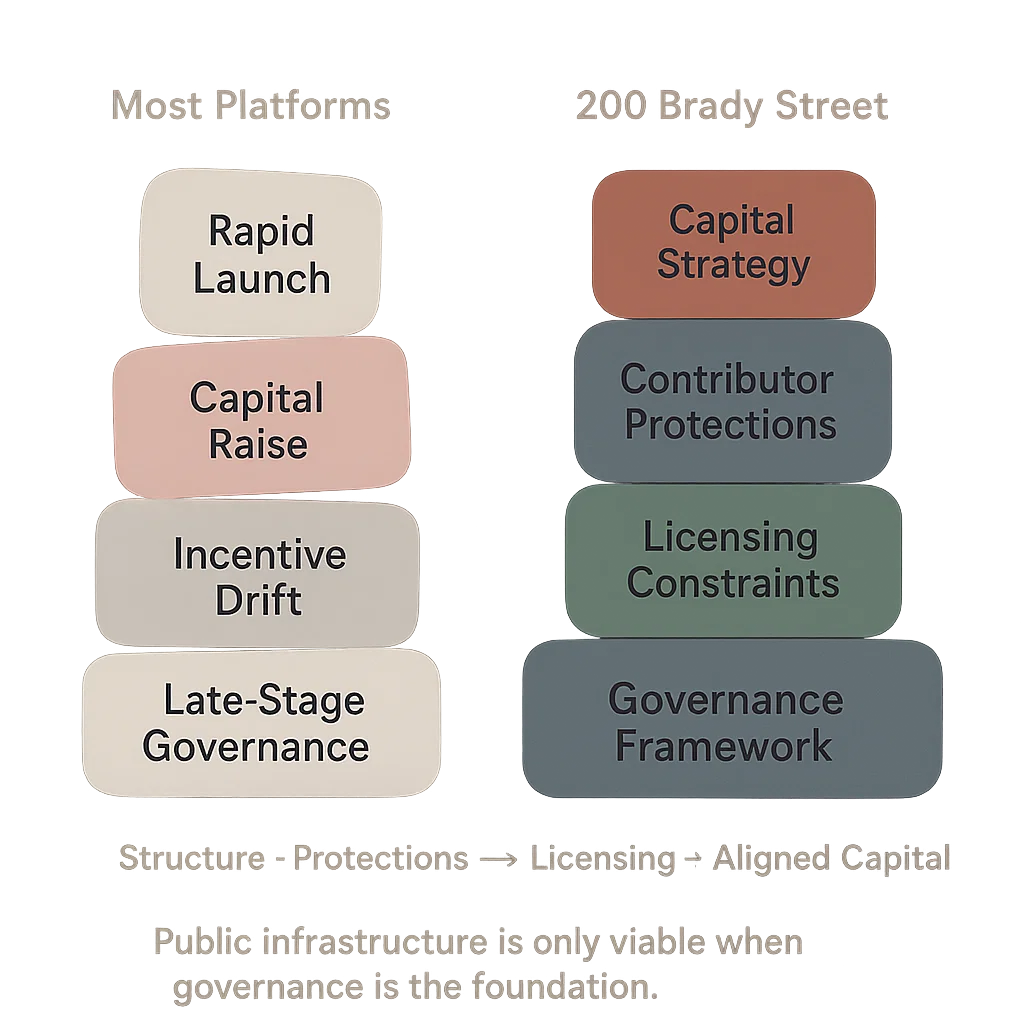
KEY STRUCTURAL PRINCIPLES
Governance isn’t an overlay, it’s the foundation
- Milestone aligned execution: Funders buy into structure, not features.
- Governance bound licensing: Commercial use requires transparency back clauses.
- No override logic: Contributor protection, tiering, and redaction rules are fixed, and public.
- Auditability by design: Every decision layer is traceable, from ticket entry to dashboard access.
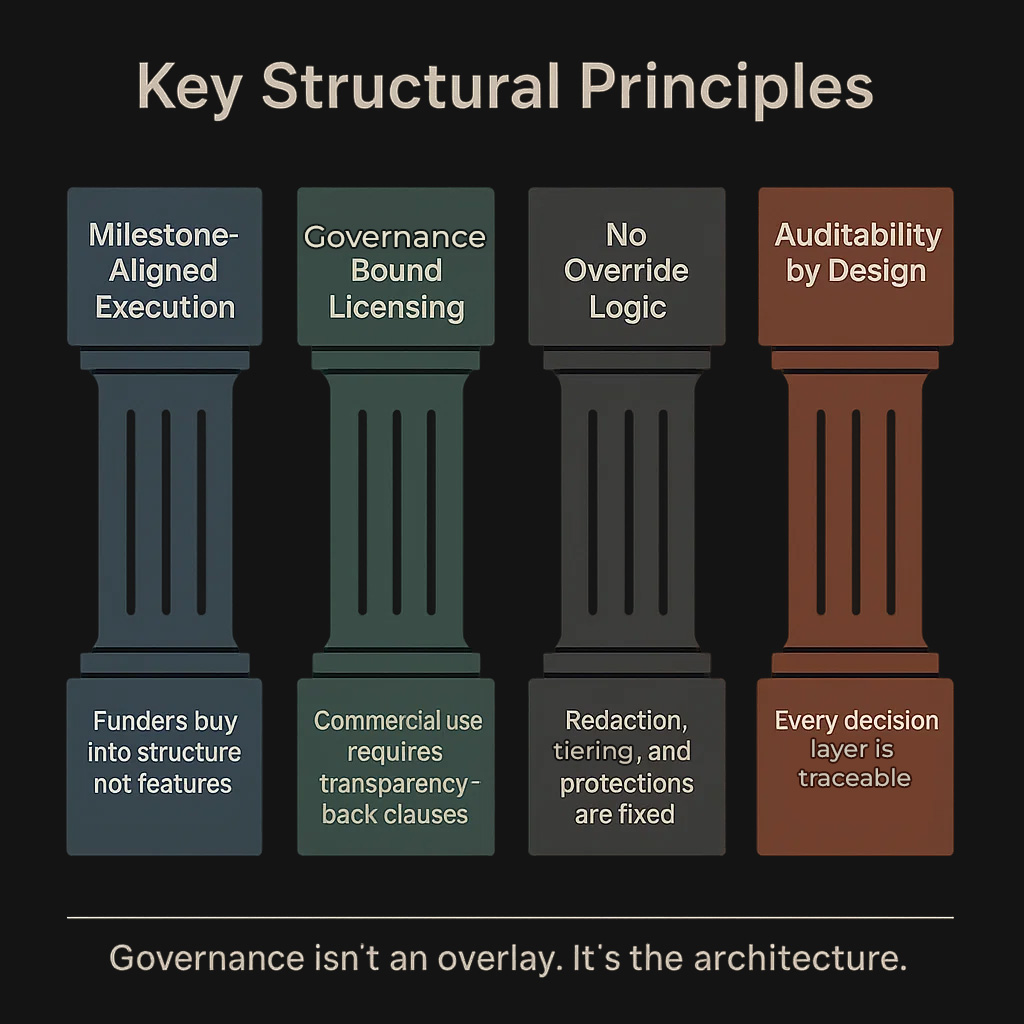
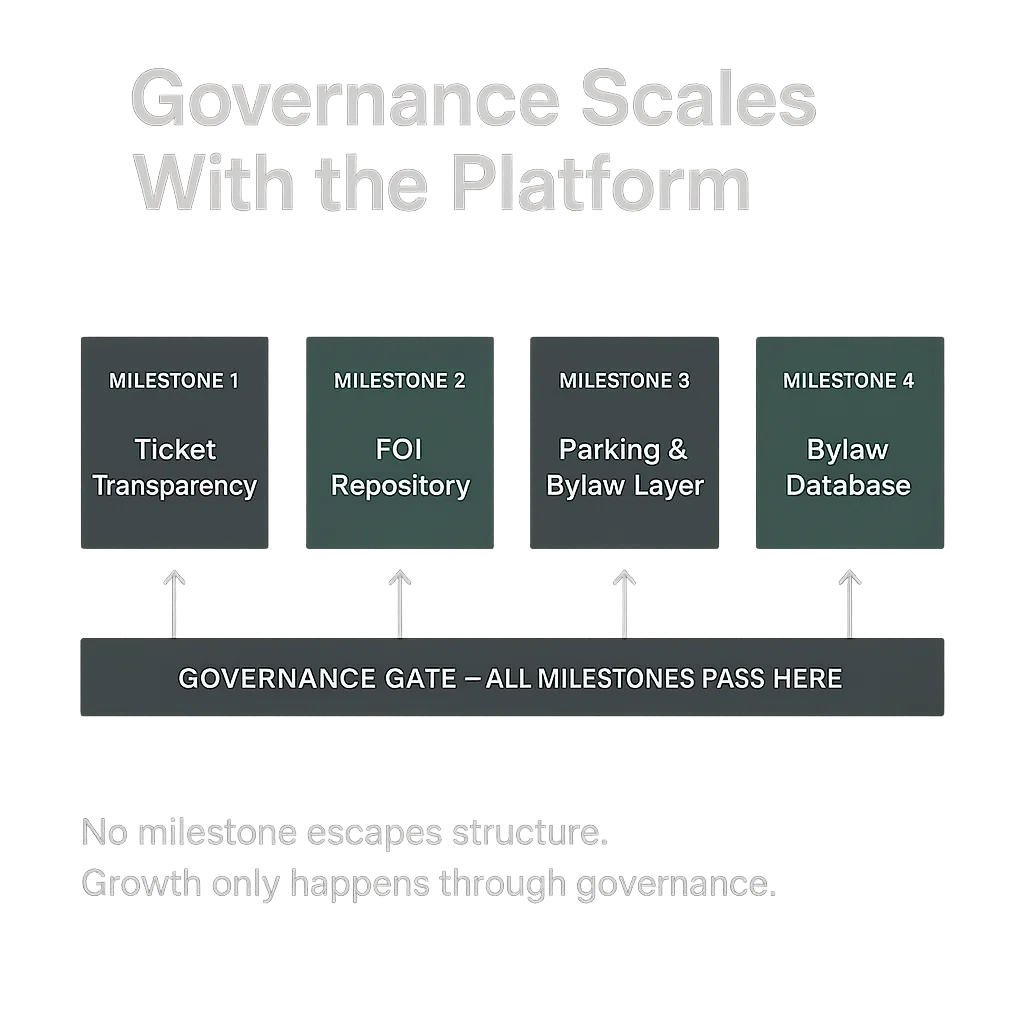
GOVERNANCE SCALES WITH THE PLATFORM
Future milestones stay bound to the same public logic
As the platform expands into later milestones, FOI indexing, legal recovery tooling, academic licensing, the same structural guardrails apply. No deployment moves forward unless it passes through the same milestone logic and contributor first constraints. This isn’t policy by promise. It’s governance by design.
Many of the governance mechanisms outlined here, from milestone control to redaction governance are defined in greater detail on our Key Terms & Concepts page. It’s not jargon. It’s structure.
